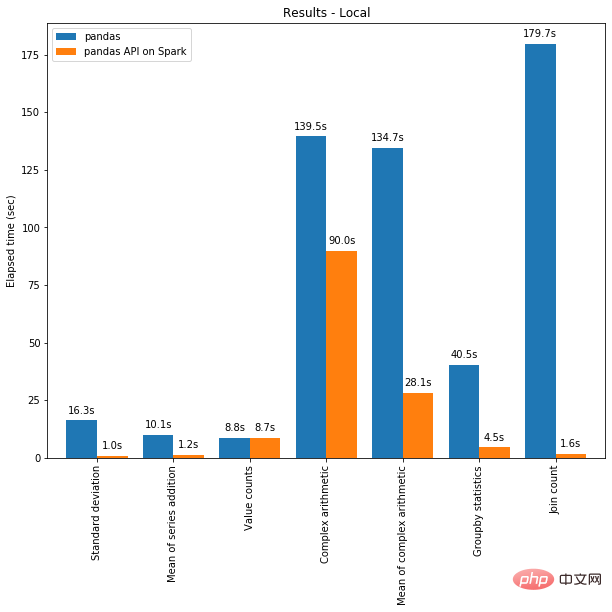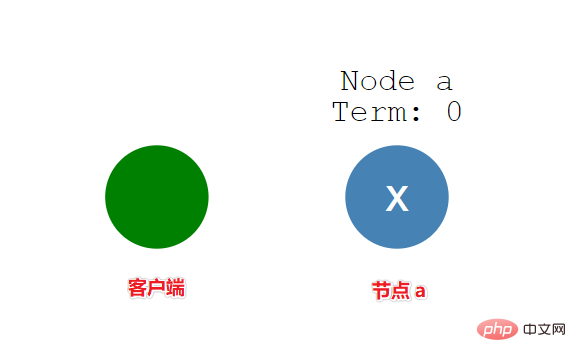
What is distributed computing?
Distributed computing is a computing method, which is opposite to centralized computing. Distributed computing decomposes the application into many small parts and assigns them to multiple computers for processing, so that Save overall calculation time and greatly improve calculation efficiency.
Definition of Distributed Computing
Broad Definition
Study how to convert a system that requires huge computing power The problem to be solved is divided into many small parts, and then these parts are assigned to many computers for processing, and finally the calculation results are combined to obtain the final result.
Recent distributed computing projects have been used to use the idle computing power of thousands of volunteer computers around the world, through the Internet, to analyze electrical signals from outer space to search for hidden black holes. And explore the possible existence of extraterrestrial intelligent life; you can search for Mersenne prime numbers with more than 10 million digits; you can also search for and discover more effective drugs against HIV. These projects are very large and require an amazing amount of calculations. It is absolutely impossible for a single computer or individual to complete them within an acceptable time.
Definition of the Chinese Academy of Sciences
When two or more software share information with each other, these software can run on the same computer or on multiple computers connected through a network run. Distributed computing has the following advantages over other algorithms:
1. Rare resources can be shared.
2. Through distributed computing, the computing load can be balanced on multiple computers.
3. You can place the program on the computer that is most suitable for running it.
Among them, sharing rare resources and balancing loads is one of the core ideas of computer distributed computing.
Grid computing
Grid computing is a type of distributed computing. If a certain job is distributed, then it must not be just one computer, but a computer network. This "ant moving mountains" approach will have strong data processing capabilities.
The essence of grid computing is to combine and share resources and ensure system security.
Working Principle
Distributed computing is a type of computing science that uses the idle processing power of central processors of computers on the Internet to solve large-scale computing problems. Below, let's see how it works:
First, find a problem that requires a huge amount of computing power to solve. Such problems are generally interdisciplinary, extremely challenging, and scientific research topics that humans urgently need to solve. The more famous ones are:
Solving more complex mathematical problems, such as: GIMPS (finding the largest Mersenne prime number).
Research to find the most secure password system, such as: RC-72 (password cracking).
Biopathological research, such as: Folding@home (study of protein folding, misunderstanding, aggregation and related diseases caused by this).
Drug research for various diseases, such as: United Devices (finding effective drugs against cancer).
Signal processing, such as: SETI@Home (Searching for extraterrestrial civilization at home).
In the past, these problems were supposed to be solved by supercomputers. However, the cost of building and maintaining supercomputers is very expensive, which is not something an ordinary scientific research organization can afford. With the development of science, a cheap, efficient, and easy-to-maintain computing method emerged—distributed computing!
With the popularity of computers, personal computers have begun to enter thousands of households. Along with this comes the problem of computer utilization. More and more computers are sitting idle, and even when powered on, the potential of the central processing unit is far from being fully utilized. We can imagine that a home computer spends most of its time "waiting". Even when users are actually using their computers, the processor is still doing a lot of silent work (waiting for input but not actually doing anything). The emergence of the Internet has made it a reality to connect and call all these computer systems with limited computing resources.
Then, some problems that are very complex in themselves but are well suited to be divided into a large number of smaller computing pieces are proposed, and then a computing server is developed by a research institution through a lot of hard work. and client. The server is responsible for dividing the calculation problem into many small calculation parts, then assigning these parts to many computers participating in the network for parallel processing, and finally integrating these calculation results to obtain the final result.
Of course, this may seem primitive and difficult, but as the number of participants and computers involved in the calculation continues to increase, the calculation plan becomes very fast, and it has been proven to be feasible in practice. . At present, the processing capabilities of some larger distributed computing projects can reach or even exceed the fastest supercomputers in the world.
You can also choose to participate in certain projects to donate CPU core processing time. You will find that the CPU core processing time you provide will appear in the project's contribution statistics. You can compete with other participants to be ranked for your time contribution, or you can join an existing computing group or form your own. This approach is great for motivating participants.
As the number of private teams gradually increases, many large organizations (such as companies, schools and various websites) have also begun to form their own teams. At the same time, a large number of communities with the theme of distributed computing technology and project discussions have also been formed. Most of these communities translate and produce usage tutorials for distributed computing projects and publish relevant technical articles, and provide necessary technical support.
So who may join these projects? Of course, anyone can! If you have already joined a project and have ever considered joining the computing group, you will find it in the China Distributed Computing Center and Forum Find your home here. Anyone can join any distributed computing group formed by our site. I hope you find fun in the China Distributed Headquarters and Forum.
Participate in distributed computing - one of the most meaningful options to make full use of your personal computer - just download the relevant program, and then this program will be on the computer with the lowest priority operation, which has almost no impact on the normal use of the computer. If you want to use your free time on the computer to do something useful, why are you hesitating? Take action now, your insignificant contribution may make you leave a big mark in the history of the development of human science!
BOINC Distributed Computing Platform
BOINC is the abbreviation of Berkeley Open Infrastructure for Network Computing, which is the Berkeley Open Network Computing Platform.
BOINC is a distributed computing platform that can be shared by different distributed computing. Different distributed computing projects can directly use BOINC's public upload and download system, statistical system, etc., which not only brings into play the coordination between various distributed computing, but also makes the management and use of distributed computing more convenient and easier to use.
The BOINC project is sponsored by the University of California, Berkeley (U.C. Berkeley).
The BOINC project is sponsored by the National Science Foundation.
BOINC has its own points system, because the projects that can be run on BOINC vary widely. For example, the task package (Workunit, WU for short) of project A takes 3 hours to complete on a certain machine, while the project B’s The task package takes 30 hours to complete on this machine. Obviously it is not feasible to measure the workload by the number of WUs. Similarly, machine performance also varies, and it is even more impossible to measure the workload by CPU time. The integral system can only obtain the amount of calculation actually completed by the user through a certain algorithm. This article explains the integral calculation method in BOINC.
Distributed Computing in China
According to statistics from the China Internet Information Center (CNNIC), the number of Chinese netizens in the world has grown to about 12%, and is still growing rapidly. The Chinese netizens mentioned here include those from Mainland China, Hong Kong, Macau, Taiwan and overseas Chinese.
Compared with the rapid development of the Internet in China, China's distributed computing has developed slowly. In my opinion, statistics on the number of Internet users cannot very objectively reflect the level of informatization in a country, but the number or proportion of Internet users participating in distributed computing can clearly show the level of science popularization in this country. In this regard, there is no doubt that European and American countries are very leading. In the Nordic countries, almost half of all computers participate in distributed computing projects, which is a staggering number. Let's take a look at China and India. Although we have a lot of the latest technology and seem to be performing well in the process of network popularization, we are very weak in distributed computing. Let’s look at some examples:
SETI@home is the world’s largest distributed computing project. It is also the most famous project in China in terms of the number of participants there. It searches for signs of extraterrestrial life by using networked computers to download programs that analyze signals received by radio telescopes.
Although China has made progress in distributed computing and China's international ranking has risen from 29 to 24, our Chinese users still only complete one-tenth of the work completed by Japanese users, while Japan , this highly developed country has fewer Internet users than China. It seems that it is also very important to improve the quality of Internet users and increase the popularization of science. India and some Middle Eastern countries also have similar problems, and Central European countries are obviously doing better in this regard. The amount of data completed by many CIS countries has exceeded the total amount of the Russian Federation.
Folding@home is a distributed computing project that studies protein folding, misunderstanding, aggregation and related diseases caused by them. It uses networked computing and a large amount of distributed computing power to simulate the process of protein folding and guide us in a series of studies on diseases caused by folding.
The number of people participating in this project in China is constantly increasing. As of the end of March 2011, the number of users of the China 3213 team reached 3,025, with about 190 active users.
Participate in this project The Climateprediction project uses the latest climate prediction models to perform calculations on computers in homes, schools, and offices. The results of these calculations will form the world's largest weather prediction model. The climate is changing, and what we do about it is an important global topic. This will affect human agricultural production, water resources, ecosystems, energy needs, insurance costs and many other aspects closely related to humans. There is solid scientific evidence that the Earth is likely to get warmer over the next few centuries, but we have no way of estimating how much the change will be. If you participate, it will help inform climate science predictions for the 21st century.
China already has many computers, many of which have extremely advanced performance. And most of them just type and play slides. This cannot but be said to be a waste of resources.
Looking from another perspective, it is not difficult to find the gap between developed and developing countries. We call this phenomenon the digital divide. Another phenomenon is equally distressing. All distributed computing projects are initiated by developed countries, such as the United States, Germany, the United Kingdom, Japan, etc. This aspect also deepens the scientific gap. Professor Gorham Richard Chelman of the Department of Chemistry at Stanford University said that distributed computing will accelerate the scientific process of the entire human race. Scientists can accomplish computational tasks that they never thought of completing before, or that would have taken decades or centuries to complete. This is indeed true, but this calculation contributes to the scientific monopoly of developed countries to a certain extent.
Relevant Chinese departments have also begun to realize the importance of distributed computing, and some university professors and scientists have also begun to delve into distributed computing science, such as: CAS@HOME of the Chinese Academy of Sciences and the "Clear Water Project" of Tsinghua University.
Recommended tutorial: "PHP"
The above is the detailed content of What is distributed computing?. For more information, please follow other related articles on the PHP Chinese website!
 PHP实现开源SeaweedFS分布式文件系统Jun 18, 2023 pm 03:56 PM
PHP实现开源SeaweedFS分布式文件系统Jun 18, 2023 pm 03:56 PM在分布式系统的架构中,文件管理和存储是非常重要的一部分。然而,传统的文件系统在应对大规模的文件存储和管理时遇到了一些问题。为了解决这些问题,SeaweedFS分布式文件系统被开发出来。在本文中,我们将介绍如何使用PHP来实现开源SeaweedFS分布式文件系统。什么是SeaweedFS?SeaweedFS是一个开源的分布式文件系统,它用于解决大规模文件存储和
 Pandas 与 PySpark 强强联手,功能与速度齐飞!May 01, 2023 pm 09:19 PM
Pandas 与 PySpark 强强联手,功能与速度齐飞!May 01, 2023 pm 09:19 PM使用Python做数据处理的数据科学家或数据从业者,对数据科学包pandas并不陌生,也不乏像云朵君一样的pandas重度使用者,项目开始写的第一行代码,大多是importpandasaspd。pandas做数据处理可以说是yyds!而他的缺点也是非常明显,pandas只能单机处理,它不能随数据量线性伸缩。例如,如果pandas试图读取的数据集大于一台机器的可用内存,则会因内存不足而失败。另外pandas在处理大型数据方面非常慢,虽然有像Dask或Vaex等其他库来优化提升数
 PHP中的分布式数据中心May 23, 2023 pm 11:40 PM
PHP中的分布式数据中心May 23, 2023 pm 11:40 PM随着互联网的快速发展,网站的访问量也在不断增长。为了满足这一需求,我们需要构建高可用性的系统。分布式数据中心就是这样一个系统,它将各个数据中心的负载分散到不同的服务器上,增加系统的稳定性和可扩展性。在PHP开发中,我们也可以通过一些技术实现分布式数据中心。分布式缓存分布式缓存是互联网分布式应用中最常用的技术之一。它将数据缓存在多个节点上,提高数据的访问速度和
 使用Redis实现分布式计数器May 11, 2023 am 08:06 AM
使用Redis实现分布式计数器May 11, 2023 am 08:06 AM什么是分布式计数器?在分布式系统中,多个节点之间需要对共同的状态进行更新和读取,而计数器是其中一种应用最广泛的状态之一。通俗地讲,计数器就是一个变量,每次被访问时其值就会加1或减1,用于跟踪某个系统进展的指标。而分布式计数器则指的是在分布式环境下对计数器进行操作和管理。为什么要使用Redis实现分布式计数器?随着分布式计算的普及,分布式系统中的许多细节问题也
 分布式系统必须知道的一个共识算法:RaftApr 07, 2023 pm 05:54 PM
分布式系统必须知道的一个共识算法:RaftApr 07, 2023 pm 05:54 PM一、Raft 概述Raft 算法是分布式系统开发首选的共识算法。比如现在流行 Etcd、Consul。如果掌握了这个算法,就可以较容易地处理绝大部分场景的容错和一致性需求。比如分布式配置系统、分布式 NoSQL 存储等等,轻松突破系统的单机限制。Raft 算法是通过一切以领导者为准的方式,实现一系列值的共识和各节点日志的一致。二、Raft 角色2.1 角色跟随者(Follower):普通群众,默默接收和来自领导者的消息,当领导者心跳信息超时的
 Redis实现分布式配置管理的方法与应用实例May 11, 2023 pm 04:22 PM
Redis实现分布式配置管理的方法与应用实例May 11, 2023 pm 04:22 PMRedis实现分布式配置管理的方法与应用实例随着业务的发展,配置管理对于一个系统而言变得越来越重要。一些通用的应用配置(如数据库连接信息,缓存配置等),以及一些需要动态控制的开关配置,都需要进行统一管理和更新。在传统架构中,通常是通过在每台服务器上通过单独的配置文件进行管理,但这种方式会导致配置文件的管理和同步变得十分复杂。因此,在分布式架构下,采用一个可靠
 Redis实现分布式对象存储的方法与应用实例May 10, 2023 pm 08:48 PM
Redis实现分布式对象存储的方法与应用实例May 10, 2023 pm 08:48 PMRedis实现分布式对象存储的方法与应用实例随着互联网的快速发展和数据量的快速增长,传统的单机存储已经无法满足业务的需求,因此分布式存储成为了当前业界的热门话题。Redis是一个高性能的键值对数据库,它不仅支持丰富的数据结构,而且支持分布式存储,因此具有极高的应用价值。本文将介绍Redis实现分布式对象存储的方法,并结合应用实例进行说明。一、Redis实现分
 PHP与数据库分布式的集成May 15, 2023 pm 09:40 PM
PHP与数据库分布式的集成May 15, 2023 pm 09:40 PM随着互联网技术的发展,对于一个网络应用而言,对数据库的操作非常频繁。特别是对于动态网站,甚至有可能出现每秒数百次的数据库请求,当数据库处理能力不能满足需求时,我们可以考虑使用数据库分布式。而分布式数据库的实现离不开与编程语言的集成。PHP作为一门非常流行的编程语言,具有较好的适用性和灵活性,这篇文章将着重介绍PHP与数据库分布式集成的实践。分布式的概念分布式

Hot AI Tools

Undresser.AI Undress
AI-powered app for creating realistic nude photos

AI Clothes Remover
Online AI tool for removing clothes from photos.

Undress AI Tool
Undress images for free

Clothoff.io
AI clothes remover

AI Hentai Generator
Generate AI Hentai for free.

Hot Article

Hot Tools

EditPlus Chinese cracked version
Small size, syntax highlighting, does not support code prompt function

Safe Exam Browser
Safe Exam Browser is a secure browser environment for taking online exams securely. This software turns any computer into a secure workstation. It controls access to any utility and prevents students from using unauthorized resources.

Dreamweaver CS6
Visual web development tools

SublimeText3 Linux new version
SublimeText3 Linux latest version

mPDF
mPDF is a PHP library that can generate PDF files from UTF-8 encoded HTML. The original author, Ian Back, wrote mPDF to output PDF files "on the fly" from his website and handle different languages. It is slower than original scripts like HTML2FPDF and produces larger files when using Unicode fonts, but supports CSS styles etc. and has a lot of enhancements. Supports almost all languages, including RTL (Arabic and Hebrew) and CJK (Chinese, Japanese and Korean). Supports nested block-level elements (such as P, DIV),






